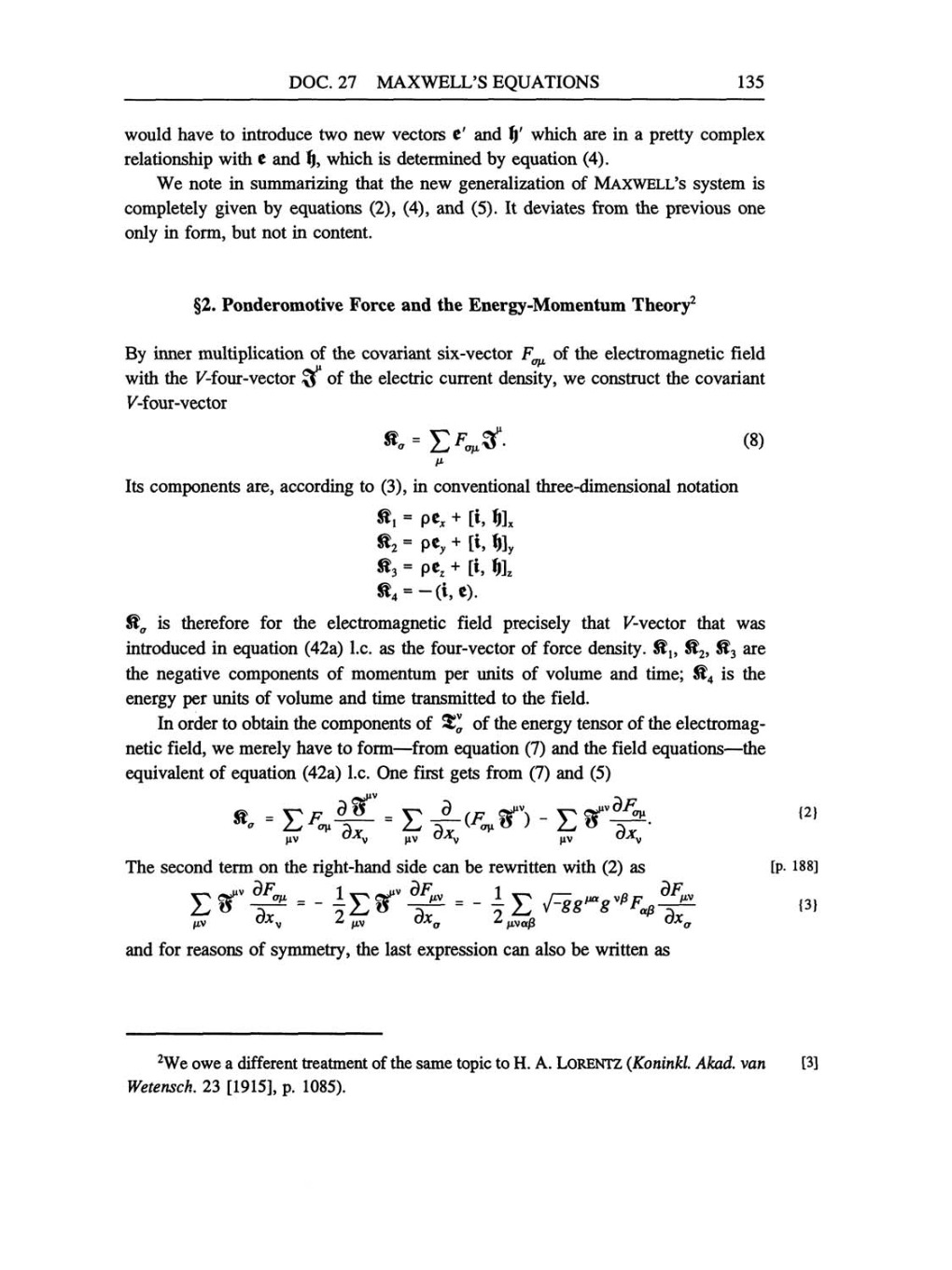DOC. 27 MAXWELL'S
EQUATIONS
135
would have to introduce two
new
vectors
e'
and
if'
which
are
in
a pretty complex
relationship
with
e
and
1),
which is determined
by equation
(4).
We note in
summarizing
that the
new
generalization
of
Maxwell's
system
is
completely given
by equations (2), (4),
and
(5).
It deviates from the
previous
one
only
in
form,
but not in content.
§2.
Ponderomotive Force and the
Energy-Momentum
Theory2
By
inner
multiplication
of the covariant six-vector
F
of the
electromagnetic
field
with the V-four-vector
$
of
the electric current
density,
we
construct the covariant
V-four-vector
K
=
(8)
Its
components
are,
according
to
(3),
in conventional three-dimensional notation
*1
= Pe*
+
[t,
fox
=
pe,
+ [i,
%
«3
= pe
+ [t,
foz
is
therefore
for the
electromagnetic
field
precisely
that
V-vector
that
was
introduced in
equation
(42a) l.c.
as
the four-vector of force
density.
&2,
S3 are
the
negative
components
of
momentum
per
units
of
volume and
time;
Ä4
is the
energy
per
units
of
volume and time transmitted to the field.
In
order to obtain the
components
of
Iva
of
the
energy
tensor of
the
electromag-
netic
field, we
merely
have to
form-from
equation (7)
and
the
field
equations-the
equivalent
of
equation
(42a)
l.c. One
first
gets
from
(7)
and
(5)
«.
= *
£
^(^r"
e«ü*-
jiv
Uy^v |iv
u-*v
jiv
The second
term
on
the
right-hand
side
can
be rewritten with
(2)
as
{2}
es""If
"
|f
-
-
/xv
/iv
Ua
iivctß
and for
reasons
of
symmetry,
the last
expression
can
also be written
as
[p.
188]
{3}
[3]
2We
owe a
different treatment of
the
same topic
to H. A.
Lorentz
(Koninkl.
Akad.
van
Wetensch. 23
[1915],
p.
1085).
